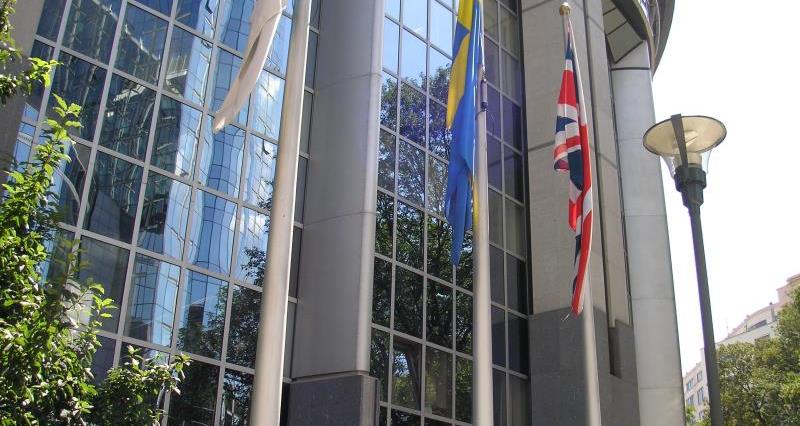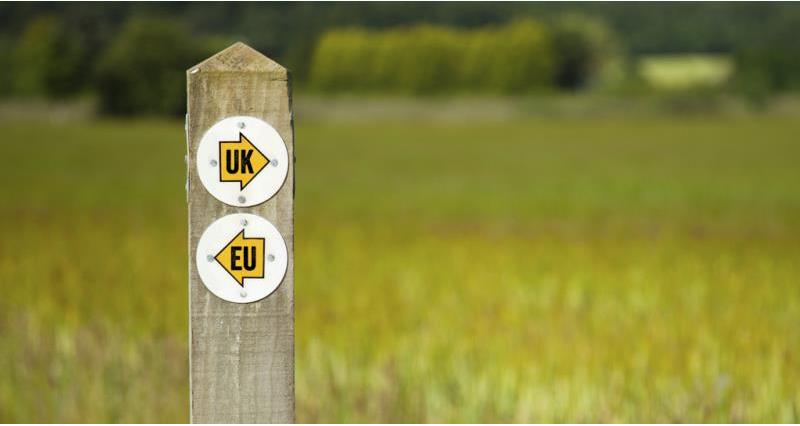Article 50
The rules for exiting the EU are set out in Article 50 of the Treaty on European Union. This is the only lawful route for withdrawal from the EU under the Treaties.
CAP
Common Agricultural Policy. It’s the agricultural policy of the European Union, whose objectives are set in the Treaty of Rome. With an annual budget of roughly €59 billion, the money is used for income support, market measures and rural development programmes.
Customs Union
The EU Customs Union is a single trading area where all goods circulate freely, whether made in the EU or imported from outside. The EU imposes a common external tariff on goods coming in from third countries. Duty on goods from outside the EU is generally paid when they first enter the EU, but after that there is nothing more to pay and no more checks. Customs duties are one of the sources of public finances for the EU and its Member States.
Department for Business, Energy and Industrial Strategy
This UK government department brings together responsibilities for business, industrial strategy, science, innovation, energy, and climate change. The Rt Hon Greg Clark is Secretary of State for this department.
Department for Exiting the European Union
This UK government department is responsible for overseeing negotiations to leave the EU and establishing the future relationship between the UK and EU. Headed up by Stephen Barclay MP.
Department for International Trade
This government department leads on boosting UK trade - promoting the UK as a place to do business and trade with; driving inward investment; and, in time, negotiating trade deals and free trade agreements. The Rt Hon Liam Fox MP is Secretary of State.
Defra
The government department responsible for safeguarding our natural environment, supporting our world-leading food and farming industry, and sustaining a thriving rural economy.
European Council
The highest decision-making body in the EU. Made up of the Heads of States or Government. The European Council decides how much money is assigned to the CAP usually every seven years after having obtained the consent of the European Parliament in a process known as the Multi-annual Financial Framework (MFF).
European Court of Justice
This is the judicial institution of the EU. It deals with disputes between parties and ensures that European law is interpreted and applied in the same way in every member state.
EU’s Common Commercial Policy
As part of the European Community, the Member States have established a customs union with common arrangements for imports from other countries. The Community's common commercial policy is therefore based on a common external tariff uniformly applied to all Member States.
European Economic Area
The area that provides the free movement of goods, people, services and capital within the European Single Market. EU members plus Iceland, Liechtenstein and Norway constitute the EEA.

The European Parliament
The directly elected parliamentary institution of the European Union. Together with the Council of the European Union and the European Commission, it exercises the legislative function of the EU.
Free Trade Agreement (FTA)
A treaty between two or more countries to establish a free trade area where commerce in goods and services can be conducted across their common borders, without tariffs or hindrances but (in contrast to a common market) capital or labour may not move freely. Member countries usually impose a uniform tariff on trade with non-member countries.

The Great Repeal Bill
Announced last October at the Conservative Party Conference, the Bill will repeal the European Communities Act, which says EU law is supreme to the UK, and ensure the UK leaves the jurisdiction of the European Court of Justice. But it will also transpose all EU legislation into domestic UK law. The UK Parliament can then "amend, repeal and improve" the laws as necessary.
Most Favoured Nation (MFN)
An MFN tariff is a non-discriminatory tariff charged on imports. It excludes preferential tariffs under free trade agreements and other schemes or tariffs charged inside quotas.
Single Market
The Single Market allows people and businesses to move and trade freely across borders within the EU. These freedoms are laid down in the foundations of the European Union. Being the largest single market in the world has meant that the EU can negotiate from a position of strength in securing international trade agreements around the world.
Tariff Rate Quota (TRQ)
A ‘TRQ’ is a trade policy tool used to protect a specific product from competitive imports. In a TRQ quantities inside a quota are charged lower import duty rates, than those outside.
Third-country
The term ‘third country’ is used in the Treaties, where it means a country that is not a member of the Union. This meaning is derived from ‘third country’ in the sense of one not party to an agreement between two other countries.
UK Food Supply Chain
Farming is the foundation stone of the UK’s food and drink industry worth some £103 billion - the equivalent of 6.8 per cent of the GVA of the UK economy.
The farming and food sectors provide some 3.9 million jobs.
Farming offers huge potential to the rural economy as a whole and impacts the wider economy because of its role as a driving force in the food and farming sector.
Food supply chain in the UK as a whole generates £177 billion, which comes from spending by consumers.
World Trade Organisation (WTO)
As a consequence of the Great Depression of the 1930s many countries sought to protect their domestic industries by raising tariffs on foreign imports. After the Second World War an international agreement was made and an institution established in Geneva to prevent a repetition of this kind of protectionism.
The original GATT (General Agreement on Trade and Tariffs) Agreement of 1947 was intended to apply to agricultural trade, but in practice it was largely a dead letter. Successive “Rounds” of multilateral trade negotiations over 40 years substantially reduced tariffs on industrial goods but scarcely touched agriculture, leaving agricultural tariffs significantly higher than industrial tariffs.
The Uruguay Round, starting in 1986, produced the first multilateral agreement which seriously tackled agricultural issues. It was a significant first step towards order, fairer competition and a less distorted sector. It was implemented over a six year period (ten years for developing countries) that began in 1995. The Uruguay Round agreement included a commitment to continue the reform through new negotiations. These were launched in 2001, as required by the Agriculture Agreement, in the “Doha” Round. This has not concluded and has produced few results.
One of the consequences of the Uruguay Round was to change GATT into the World Trade Organisation (WTO), although the basic rules have remained the same.
The WTO ‘Boxes’
In WTO terminology, subsidies in general are identified by “boxes” which are given the colours of traffic lights: green (permitted), amber (slow down — i.e. be reduced), red (forbidden). In agriculture, things are, as usual, more complicated. The Agriculture Agreement has no red box, although domestic support exceeding the reduction commitment levels in the amber box is prohibited; and there is a blue box for subsidies that are tied to programmes that limit production. There are also exemptions for developing countries.
